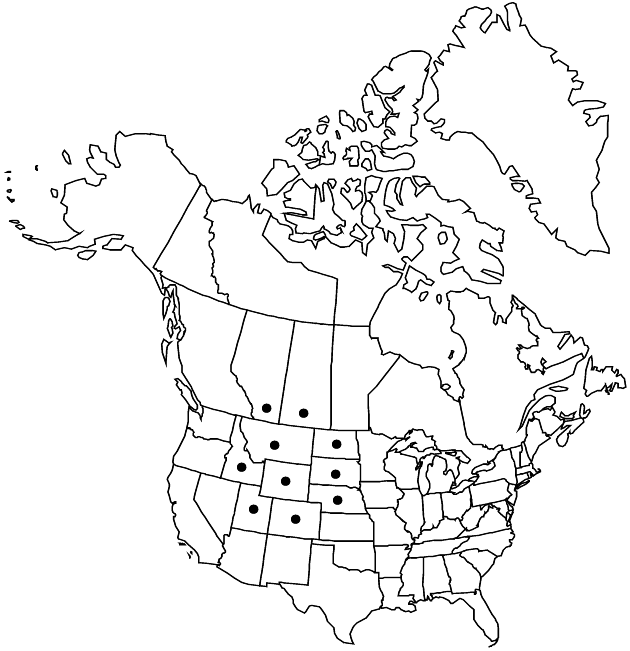Erigeron radicatus
Fl. Bor.-Amer. 2: 17, plate 122. 1834.
Perennials, (1–)2–6(–12) cm; taprooted, caudices branches relatively short, thick. Stems erect, strigose to sparsely or densely short-villous (hairs loosely appressed to ascending or spreading), eglandular. Leaves mostly basal (persistent) (eciliate or weakly ciliate proximally); blades 1-nerved linear to narrowly oblanceolate or subspatulate, (5–)10–50(–60) × 0.8–2.5 mm (bases gradually narrowing), margins entire (apices obtuse to rounded), abaxial faces glabrate or glabrous, shiny, adaxial sparsely, loosely strigose, eglandular; cauline mostly on proximal 1/2–1/3 of stems (absent in some high elevation forms), abruptly or gradually reduced distally. Heads 1. Involucres (3–)4–6(–8) × (5–)8–12(–15) mm. Phyllaries in 2–3(–4) series (subequal), villosulous to villoso-hirsutulous (hairs usually with purplish cross walls at least in basal cells), minutely glandular apically or eglandular. Ray florets (12–)20–44(–85); corollas white, less commonly purplish, 4–7(–8) mm, laminae coiling. Disc corollas (2–)2.5–3.5(–4) mm. Cypselae 2.1–2.5 mm, 2-nerved, faces sparsely strigose; pappi: outer of scales, inner of (6–)7–11 (readily falling) bristles.
Phenology: Flowering May–Aug.
Habitat: Rocky slopes, ridges, and summits, ledges and crevices, outcrops and talus, usually limestone, alpine tundra
Elevation: (1400–)1600–2800(–3400) m
Distribution

Alta., Sask., Colo., Idaho, Mont., Nebr., N.Dak., S.Dak., Utah, Wyo.
Discussion
Collections of Erigeron radicatus often have been identified as E. ochroleucus var. scribneri; E. radicatus is distinctive in its branched caudex, villous cauline vestiture, more reduced leaf vestiture, involucral vestiture of hairs with purple cross walls, shorter disc corollas, and relatively few, readily falling pappus bristles. Erigeron radicatus often is essentially scapiform at relatively high elevation (2700–3400 m) in Idaho, Montana, Utah, and Wyoming; more eastern populations in the Great Plains, at lower elevations (1400–2600 m), have leafier stems but are hardly different in other features. Plants of some populations in Albany and Carbon counties, Wyoming, produce atypically shorter rays.
Selected References
None.